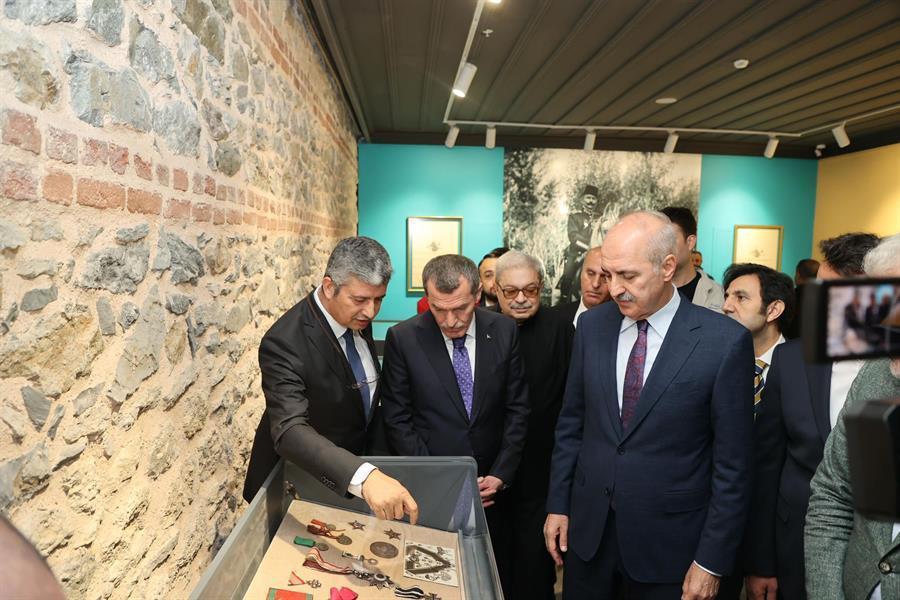
Restoration works initiated in 2015 in the old Zeytinburnu Municipality building have brought to light an ancient mosaic structure.
Also, a cist-type tomb, a marble sarcophagus and skeletons were unearthed in an area adjacent to the building and used as a parking lot as part of the ongoing works in 2021.
The area, which has been under protection, was opened as the Mosaic Museum at Kazlıçeşme Sanat Complex.
Speaking at the opening ceremony on Oct. 17, Turkish Parliament Speaker Numan Kurtulmuş said, “Wherever you excavate in this city, it is possible for you to come across a historical artifact. It is a great chance for Zeytinburnu and Istanbul that a perfect mosaic and a very important sarcophagus were unearthed by chance in Zeytinburnu.”
Zeytinburnu Mayor Ömer Arısoy said: “We decided to exhibit this largest mosaic and other finds discovered outside the city walls under the name of Zeytinburnu Mosaic Museum, as new witnesses of the history of Istanbul. We believe that our museum will be a new breath for Istanbul's cultural tourism. The art gallery on the ground floor of the building, which served as a culture and art center after the restoration, has hosted 12 exhibitions to date. This building, named Kazlıçeşme Sanat, hosts three major exhibitions every year.”
The historical building was built as a military hospital in 1828 and later began to serve as the Zeytinburnu Municipality Building in 1984.
According to information provided by the Zeytinburnu Municipality, the mosaic structure, dating back to the Late Roman - Early Byzantine period, was almost intact.
The first part of the mosaics was discovered during the restoration work carried out in 2015 in the historical building. During the excavation works that continued until 2018, the remaining parts of the mosaics were unearthed. A marble sarcophagus and a cist-type tomb, adjacent to the building, were also found under the mosaics.
Findings obtained from the sarcophagus and the studies on the bones revealed that the mosaics dated back to the Late Roman - Early Byzantine period. According to the carbon 14 results, the bones date back to between 221 and 38 A.D., while DNA tests are currently ongoing at the Middle East Technical University (METU) in the capital Ankara.
According to examinations on the sarcophagus, which is believed to belong to the Byzantine emperor, one of the two skeletons in the sarcophagus is 1,750 years old and the other is 1,775 years old.
It was also reported that the people in the sarcophagus lived between the fourth and fifth centuries; the woman was 30-40 years old and the man was 40-50 years old. The man had a broken rib and a rheumatic disease.
Kazlıçeşme Sanat complex is made up of a library, art gallery, restaurant and cafe areas. The ground floor of the building now serves as an art gallery, which is Kazlıçeşme Sanat, and the Mosaic Museum is located outside this building. The last floor of the building was turned into an art library.